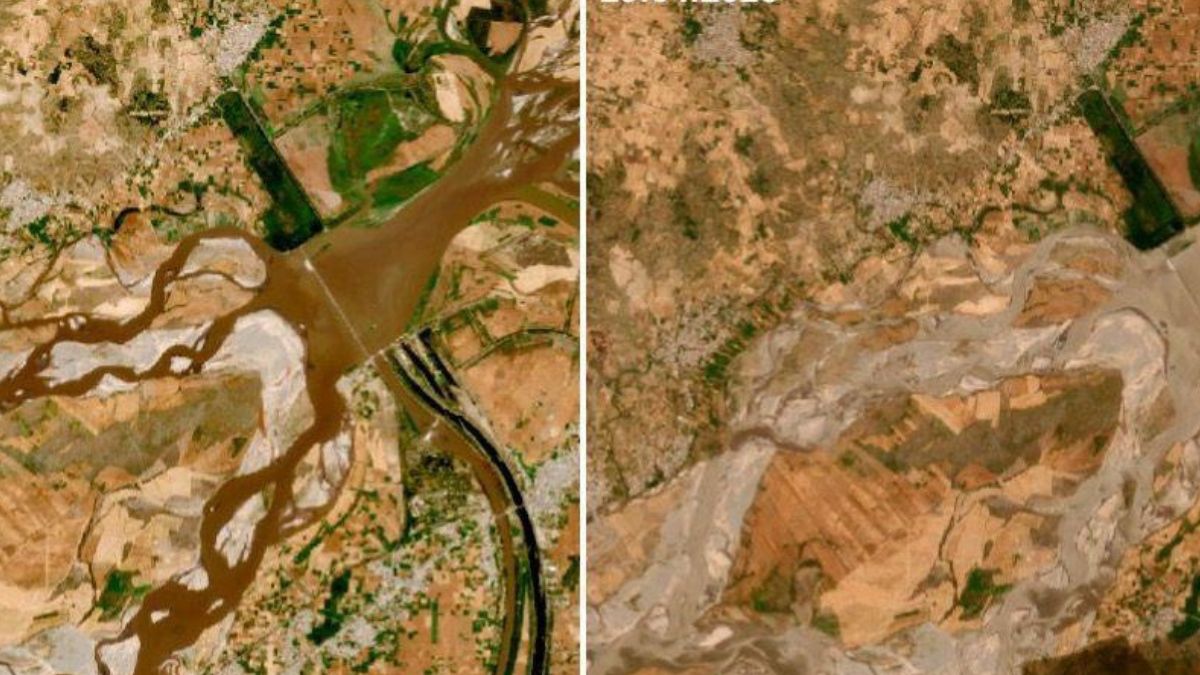Pakistan's Chenab River Drying Up After India Suspends Indus Waters Treaty? Viral Satellite Images Spark Concern
A series of satellite images shared online has stirred alarm in Pakistan and beyond, showing a sharp drop in the water level of the Chenab River just days after India announced the suspension of the Indus Waters Treaty (IWT). Captured between April 26 and April 29, the images reveal visibly narrowed distributary channels and near-dry riverbeds in Pakistan’s Sialkot region, fueling speculation that India’s move may already be impacting downstream water flow. Assam’s Health and Irrigation Minister on Wednesday shared the satellite images on social media platform X, stating, “In just 3 days, Chenab river is gasping; flow nearly gone. Satellite doesn’t lie. Pakistan can now cry and fill its rivers with tears.”
The images highlight multiple distributary channels stemming from the Chenab’s headworks, many of which appear to have significantly narrowed or dried up entirely. Experts suggest this could be the result of India exerting its permissible control over river waters under the IWT, indicating a shift in water strategy following the April 22 terror attack in Pahalgam that left 26 people dead.
Indus Waters Treaty
Signed in 1960 and brokered by the World Bank, the Indus Waters Treaty grants India control over the eastern rivers, Sutlej, Beas, and Ravi, while Pakistan was given access to the western rivers, Indus, Chenab, and Jhelum. India is permitted to use up to 20 per cent of the western rivers’ flow for irrigation and unlimited non-consumptive uses such as hydropower and navigation. With the recent terror attack allegedly linked to Pakistan-based elements, India announced the suspension of the treaty, raising geopolitical tensions between the two neighbours.
Why Chenab Matters
The Chenab River originates from the confluence of the Chandra and Bhaga rivers near Himachal Pradesh and flows through Jammu and Kashmir before entering Pakistan. It is a crucial water source for Pakistan’s agricultural heartland. Any upstream disruption in its flow can deeply affect Pakistan’s agro-economy, which relies heavily on the Indus Basin system.


